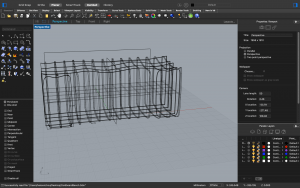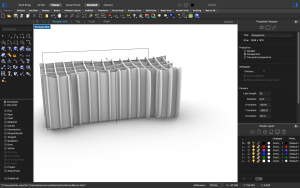Welcome to my fifth blog post, in this post, there is going to be a lot more specific information, and more detailed progress reports. I will be discussing a few of the projects I have started with using this software, and also the progress I have made with that. Lastly, I will also discuss the use of De Bono’s communication techniques which I utilized alongside my mentor, I will be providing a short description of one of the conversations.
If you have been keeping up with the recent updates, you would know that I have completed and expanded on the Fire Extinguisher project. Since that was a tutorial-based project, I was given a lot of the steps in order to create such a model. Throughout that experience, I have gained a lot of knowledge about the software, such as how it functions/behaves, and the specific functions provided by the wide range of tools. Before my last blog post, I was really making sure that my understanding was as concrete and correct as possible. During the last week, I have also been very focused on repetition, essentially putting myself in unfamiliar situations where I had to learn as I created new things.
During this week, my main focus was to start on a new project. I based the whole intent of the project into actually creating what I have designed on the software. Noticing a large amount of cardboard I had access to within the parameters of my house, I have decided to create something with them. Alongside my mentor, we discussed creating this project.
Me: So I have access to a lot of cardboard, do you think it would be a good idea to design something with the cardboard?
Mentor: Yes sure
Me: The size of the cardboard is a fair amount, I would suggest creating something furniture-based.
Mentor: Yes, I could see that happening in some way, however, what do you want to do with the software?
Me: I understand that making “furniture out of cardboard” sounds like there’s a lot of flaws to it, however, I think anything else would not suit well. With the software, I believe that it can allow me to make necessary adjustments before I actually cut the cardboard. It also gives me accurate information about how to cut each piece of cardboard and the size of each “piece”.
Mentor: Ahh, that could totally work, although, through my understanding, Rhino cannot test the engineering aspects of a product, thus it cannot determine if the cardboard is able to support the bodyweight/items put on top of the furniture.
Me: Yes I understand, I will just accommodate the supplies we have and support it the best I can, I will take measurements of the amount of cardboard available and design something that can utilize that to make it as strong as possible.
Mentor: Good idea, work with that for now, and I will check in with the progress.
That was a short snippet of one of the conversations I had with my mentor, it is adjusted to accommodate the language since I discussed it with my mentor in Mandarin. Here, You can see how we uninstinctively used many of the techniques De Bono suggested. Those of which are expressing hard facts, uncertain feelings, judgement, possibilities, etc. De Bono represented these as “hats” which represented the attitude used to respond to a problem.
During the process of deciding, I delegated between two types of furniture, one of which is a bench, and one of which is a lounge chair. I eventually decided to create a lounge chair for my mom, this is because she is short and we don’t have enough material to make one for anyone else. During this process, I have experimented with the bench design, however, it just simply did not work out, this is mostly because there was no real “use” for a bench at this time, so creating it would be useless.
Here is an image of the bench I originally planned to make.
After that, I have started working on designing the lounge chair for my mom. Taking measurements of her limbs and body, I was able to create a mould that suits her body, I am currently working to create one on Rhino, but have had a few difficulties I am looking forward to discussing with my mentor. However, so far, this is the draft I have created.
Thanks for tuning into my fifth in-depth blog post, I hope you enjoyed the check-in! I hope we will have completed a major stage of the lounge chair by next week.
Until next time,
Hanson


